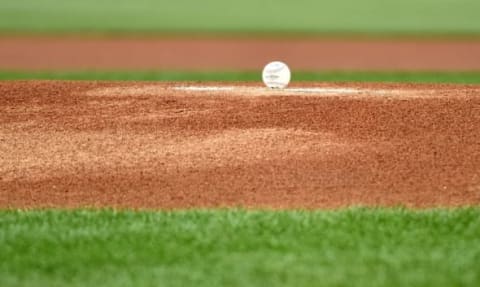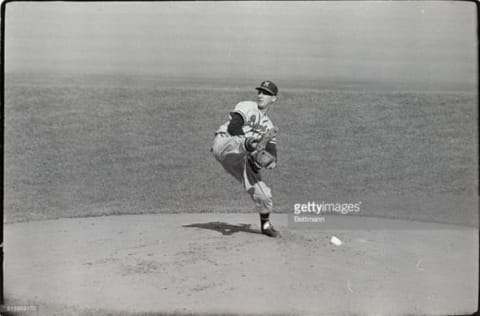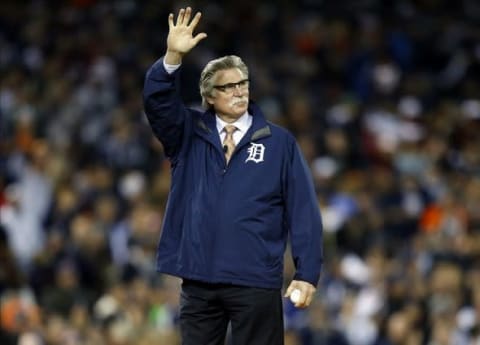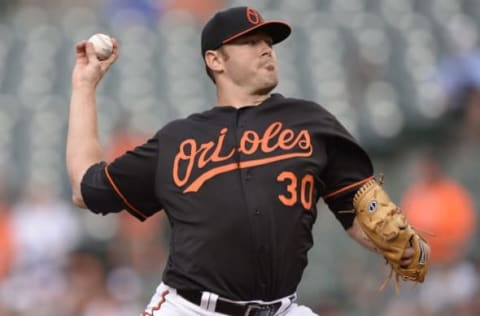MLB: Five Pitches That Changed Everything


There are plenty of pitches now in the MLB that are quite commonplace, but they all needed to begin somewhere. Let’s look back through baseball history and look at the pitches that changed everything.
The Origins Of Pitching A Baseball
In the days when organized baseball leagues were first formed in the middle of the 19th century, the job of the pitcher was to make the batter hit the baseball. And if you tried to get the batter out, you were thrown out of the game, or even worse, fired from your job. As a result, strikeouts were extremely rare and hitters ruled the game, often yelling out to the pitcher to, “Put one in about right here “.
As you might imagine, that spirit did not sit well with some of the pitchers who were having their natural competitive sports instincts severely tested. So, it was only natural that a few of them would begin experimenting with the baseball.
They noticed, for example, that the ball has seams. And that a pitched ball had a tendency to “move” instead of going on a trajectory straight to the plate depending on how the ball was held. This raised even more curiosity.
They counted the seams on the baseball too and they further noticed that the ball moved differently depending on whether fingers were placed over two seams or four seams. And even more if the fingers were placed across the seams.
It was inevitable that sooner or later the spirit of experimentation would produce pitches that would be designed to get hitters out. And with that, the whole landscape of baseball would be changed forever.

In the late 1870’s however, a obscure name in baseball history literally turned the game upside down by introducing a brand new pitch. His name was Candy Cummings and we’ll let him tell the story…….(Source: SABR)
“I began to watch the flight of the ball through the air and distinctly saw it curve, wrote Cummings many years later. A surge of joy flooded over me that I shall never forget. I felt like shouting out that I had made a ball curve. I wanted to tell everybody; it was too good to keep to myself.” All day long, Harvard batters flailed helplessly at the new pitch. The secret of the curveball was his, and for several years afterward Cummings was the only pitcher in the nation to claim mastery over the pitch.
The most effective curveball is the one that breaks in a 12 to 6 downward rotation One of the best in baseball today is thrown by Clayton Kershaw (pictured above). Others like to throw the wide sweeping curve that they aim straight at the hitter hoping he will “step in the bucket” throwing his timing off.
Because the pitch is thrown by “breaking the wrist” and with the natural motion of the fastball, it is generally not believed to put much additional stress on the arm, and is therefore not usually a cause of injury

During the same period, another variation was added to a pitcher’s arsenal called the screwball. Pat Jordan from Sports Illustrated Pitching: The Keys to Excellence: recounts that the screwball
“got its name because it must be thrown in a way that is the opposite of every pitch; because the ball spins in a way that is the reverse of a curveball; and finally, because only a demented person would specialize in such a perverse pitch that is so hard to master and so damaging to a pitcher’s arm.”
And that’s not the last time we’ll hear about damage to the arm and, in particular, the elbow that will come about with every new advance in pitching a baseball.
Notables such as Warren Spahn (pictured above), Carl Hubbell, and Fernando Valenzuela all enjoyed success with the screwball and both Hubbell and Spahn have plaques in the Hall Of Fame. Of note also is that all three are lefties and for a reason no one has figured out yet, the pitch seems to come naturally to many southpaws.

The pitch of the 1960’was the slider. Virtually every pitcher at all levels of baseball added the pitch to their repertoire. According to the Society For Baseball Research (SABR) and the man himself, George Uhle, the slider came about this way……
“One day while pitching batting practice, with Tigers outfielder Harry Heilman in the cage, Uhle began to experiment with a new pitch. He released the baseball off his middle finger, much like a bowling ball. “What kind of a curve is that?” asked the Hall of Fame outfielder. “Hey, that’s not a curve. That ball was sliding,” replied Uhle. A new pitch called the slider was created, and George Uhle took full credit for it.”
The slider is pretty much a variation of the curveball except that it breaks about 9″ across the plate instead of the downward trajectory of the curveball. The pitch is dependent on late breaking action and “hangers” usually end up in the third deck.
Pitchers perfecting the slider include Max Scherzer (pictured above), and closer Brad Lidge.
A variation of the slider would come about more recently with the development of the “cutter” which has a more severe break to it. Mariano Rivera would ride the cutter to more than 600 saves and a eventual seat in the Hall Of Fame.

That spirit of invention continued forward with the introduction of the split fingered fastball to the MLB in the 1980’s. The New York Times described the pitch as “A pitch that is thrown with the same arm-action of a regular fastball, but the pitcher’s index and middle finger are spread wide to cradle the ball. The grip causes the ball to tumble quickly down in the strike zone, tempting hitters to chase it in the dirt.” When perfected, hitters generally refer to the pitch as “the nasty”.
This pitch is notoriously responsible for damage to the arm and elbow. And for that reason, the Angels, the Twins, the Giants, the Reds, the Padres and the Rays are among the many major league teams that discourage their pitchers from developing a splitter, citing health reasons as well as the belief that throwing it too much can reduce the velocity of a pitcher’s fastball.
Nowadays though, it’s almost like pick your poison as arm injuries seem to come from everywhere. As a result, most pitchers ignore these warnings and go with the flow. Not to mention the fact that the name of the game is to get batters out any which way you can.
Notables such as Bruce Sutter, Jack Morris (pictured above), and Roger Clemens adopted the split finger as their out pitch. Note again the oddity of this being a right handers pitch for the main. Go figure.

Without a doubt, the single most important development in the game of baseball, at least from the standpoint of hitting in the past ten years or so, has been the prevalent use of the changeup to get batters out.
Writing in Sports Illustrated, Joe Lemire explains the nature of the pitch:
“When the baseball emerges from the pitcher’s hand with backspin, the seams rapidly churn up from under the ball and over the top, the tell-tale sign of either the favored pitch of hitters, the fastball, or of its ultra-important sidekick, the changeup.” “Hitters, even if they’re sitting on [the changeup], they see that spin, and they’re like sharks in the water,” said Braves righthander Kris Medlen. “They smell blood. They see four-seam spin, and even if they’re sitting on a changeup, in the back of their head, they’re like, ‘Oooh, fastball.'”
Chris Tillman (pictured above) throws one of the best changeups in the game today says, “I think a changeup is the biggest equalizer in the game. In fact, “It’s probably the best pitch in baseball, to tell you the truth.”
Next: Diamondbacks top five offseason priorities
Pitching coaches have a mantra they preach encouraging their pitchers to always think about changing speeds. And once you have mastered that, you work on changing the eye level of hitters. The changeup kills both of those with one pitch.